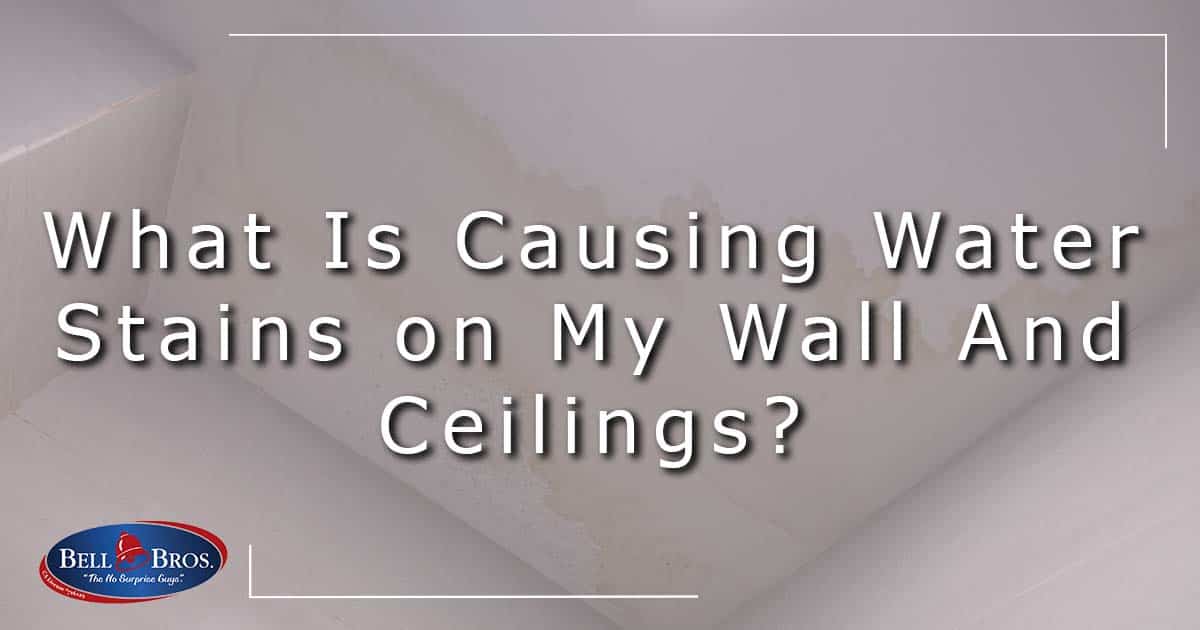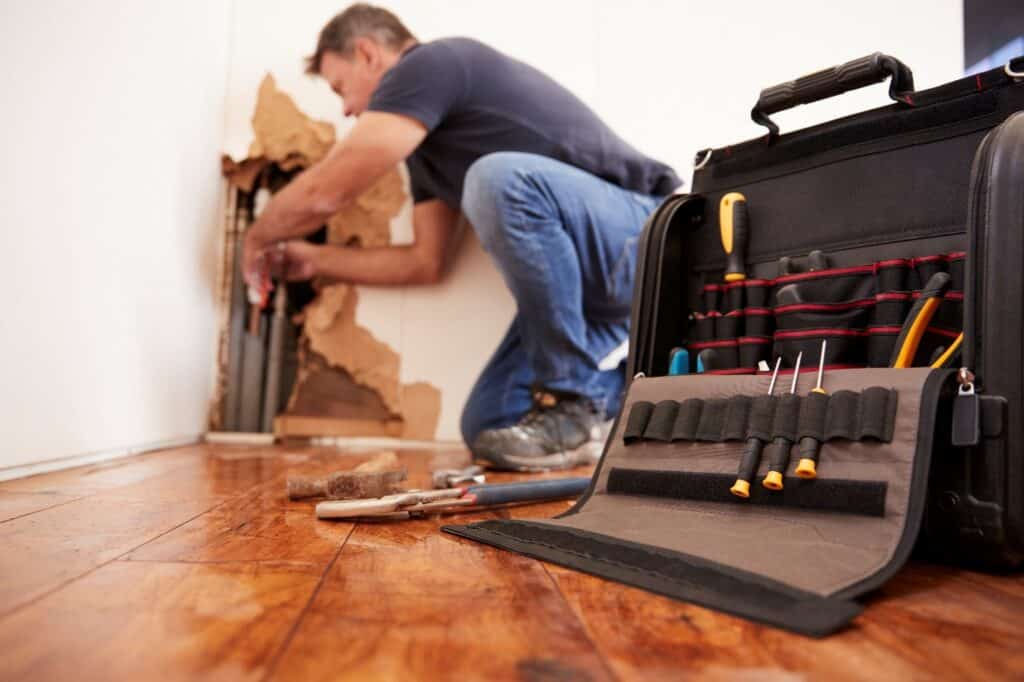What Is Causing Water Stains on My Wall And Ceilings?
Homeowners: if water stains on your walls and ceilings have started cropping up, it could be a symptom of a much larger, more serious issue. Here’s everything you need to know about water stains and what to do about them.
Finding The Issue
Parchment-like or grayish-brown stains on your ceiling or on your walls are often water stains. These water stains are caused by leaks. However, to fix the problem, you have to determine where the leak originates from in your home.
Plumbing
Flushing toilets, flowing faucets, and daily showers make the bathroom a solid contender for potential water leaks. Check your toilet, sink, and bathtub to make sure there are no signs of water backing up or any overflow.
Roof Leak
The next reason you could have water stains on your ceiling and on your walls is a potential roof leak. If your roof is damaged, one of the first signs is water stains. On top of this, a leaky roof can present itself with the following side effects:
- Loose flashing on the roof
- A dip or sagging in the middle of the floor where water has sat for a considerable time
- Cracks in your roof itself
Other Potential Causes
There are other causes of water stains on your ceiling and walls. Condensation, for example, could be a root cause. If you have ineffective insulation and ducts haven’t been installed properly, water cannot be released the way it is supposed to.
Another cause of water stains on your ceiling and walls is the water quality in your location. If you live in an area where the water is hard, your pipes and faucets can end up laced with white, chalky remnants. As it builds up, it can cause cavities, which results in water stains.
What To Do If You Find Water Stains On Your Ceiling Or Your Walls
Now that you’ve determined the root cause of the water stains on your ceiling and/or walls, what exactly do you do about it?
Call In A Professional
It’s important that you don’t DIY water damage repairs. You shouldn’t paint over the problem without first fixing what has caused the leak in the first place. Temporary solutions could cause the damage to get worse over time. This means that you could end up with a repair bill worth thousands of dollars.
As with anything related to plumbing, the earlier you spot the problem and the quicker you act, the less costly your bill will be. It’s better to nip the problem in the bud as swiftly as possible.
How To Fix Water Stains On Your Walls And Ceiling
So, what can you do to solve this problem? There are 3 core steps you need to take when you notice water stains on your walls and ceiling.
Fix The Issue, Not The Symptom
Water stains are not only unsightly, but they’re also merely the symptom of a larger issue. if you Prime and paint over the top of water stains, this does not actually solve the problem, and they will reappear. It’s important to discover why the water stains have appeared, repair the actual problem, and then complete cosmetic repairs.
Drywall Reconstruction
If the damage is significant, you’ll need to contact a professional as soon as possible. If the damage isn’t too drastic, follow the steps:
Check The Structure Of The Walls
If the ceiling or walls are sagging, there’s a very strong chance you’ll need to replace them.
Use A Putty Knife To Scrape Off The Damage
Take a putty knife and, working from the middle and expanding outward, scrape off any flaking paint or damaged drywall. This is also a great time to wipe down the area with a bleach and water mixture to kill off any bacteria or mold that has started to form. Once you’ve removed the damage, use a base sealer to seal the area, applying two coats for the best coverage.
Apply Thin Layers of Drywall Mud
After the drywall has been sealed, you can start using drywall mud. You’ll want to apply this in thin layers, allowing them to dry before sanding them and then adding another layer. The first coat will work to seal any holes, while the second coat balances and levels out your work. Use the putty knife to smooth down the edges to minimize the amount of sanding you’ll need to do.
Prime And Paint
Finally, prime and paint. Make sure you choose high-quality paint when working with a water-stained wall or ceiling.
Bell Brothers Are Here To Repair Your Water-Stained Walls or Ceiling
With all the above in mind, it’s clear why it’s far less risky to contact a professional when you spot a water stain on your walls or ceiling.
Here at Bell Brothers, we want to make sure your home is safe and functional for your family.
So, if you’re dealing with water stains – whether they’re on your walls or ceiling – don’t hesitate to get in touch!




